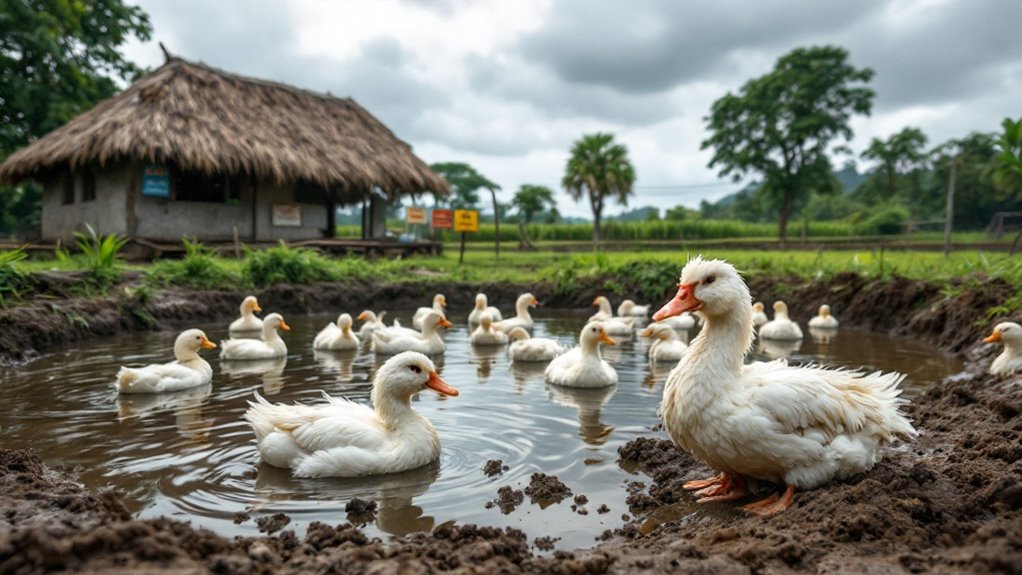A mutant strain of H5N9 avian influenza has been detected in Philippine ducks for the first time, with the initial case identified on April 30, 2025, in Camaligan, Camarines Sur. The Department of Agriculture confirmed the outbreak following laboratory verification, marking the emergence of H5N9 alongside other bird flu subtypes already present in the country. Strict quarantine, culling, and surveillance measures have been enacted, while health officials report no human cases so far. Additional insights into response strategies and implications are available.
A new threat to poultry health has emerged in the Philippines with the confirmation of the country’s first case of mutant H5N9 avian influenza in ducks, reported on April 30, 2025, in Camaligan, Camarines Sur. The detection occurred during routine surveillance conducted by the Department of Agriculture‘s Regional Field Office V and was later verified by the Bureau of Animal Industry’s Animal Disease Diagnosis and Reference Laboratory.
This development marks the first detection of H5N9 in Philippine ducks, adding to the country’s existing diversity of avian influenza strains, which already include H5N1, H5N2, and H5N6 variants. As of April 25, avian influenza affects four regions and eight provinces in the Philippines, highlighting the broader scope of the current avian influenza situation. The Bureau of Animal Industry has endorsed immediate disease control measures in response to the detection of this new strain.
The H5N9 virus is classified as a highly pathogenic avian influenza (HPAI) subtype A, known for causing severe illness and rapid transmission within bird populations. The strain identified in Camarines Sur is believed to have mutated from earlier bird flu viruses circulating in 2025, with its origins first noted in the United States.
H5N9, a highly pathogenic avian influenza subtype, causes severe illness in birds and likely mutated from earlier 2025 strains first seen in the US.
While H5N9 poses a serious threat to poultry due to its high pathogenicity, global health assessments indicate a low risk of human infection, except in cases where individuals experience prolonged or repeated exposure to infected birds or contaminated environments. As of the report date, no human cases linked to H5N9 have been confirmed in the Philippines.
Geographically, the initial outbreak remains localized in Camarines Sur, within the Bicol region. However, avian influenza continues to affect multiple regions across the Philippines, including Kalinga, Benguet, Pampanga, Nueva Ecija, Tarlac, Bataan, Bulacan, Laguna, and Manila.
Previous outbreaks, such as the H5N2 incident in Camarines Norte in January 2025, impacted local duck populations but involved different viral subtypes. In response, authorities have established strict quarantine zones covering a one-kilometer radius, with extended surveillance up to seven kilometers from infection sites, particularly in areas with backyard and commercial duck farms.
Control measures include immediate culling of infected and exposed ducks, strict biosecurity enforcement, and thorough disinfection within outbreak zones.
Collaboration between the Department of Agriculture, local government units, and the Department of Health guarantees continued monitoring for potential human infections, while public reporting of unusual poultry deaths is strongly encouraged to aid early detection and containment.









